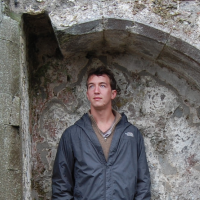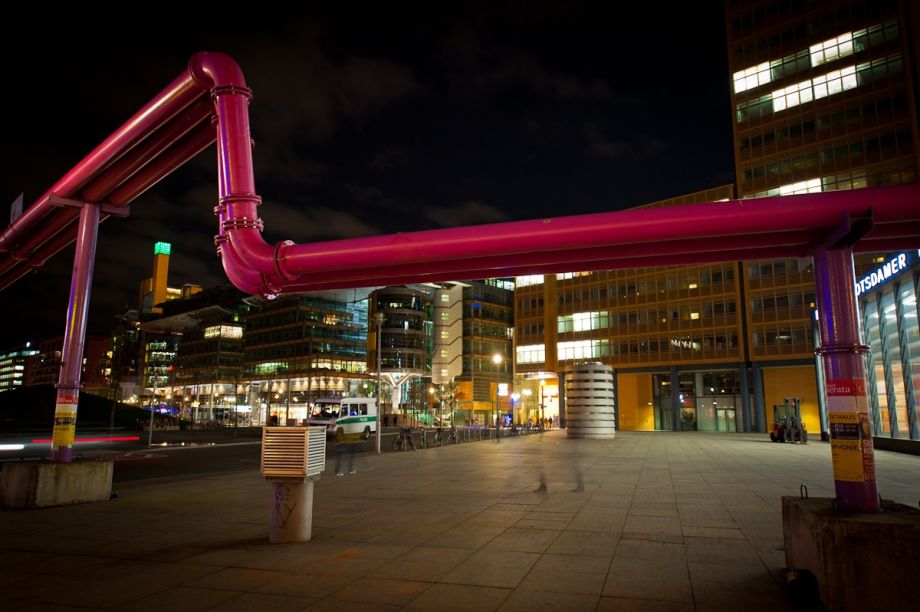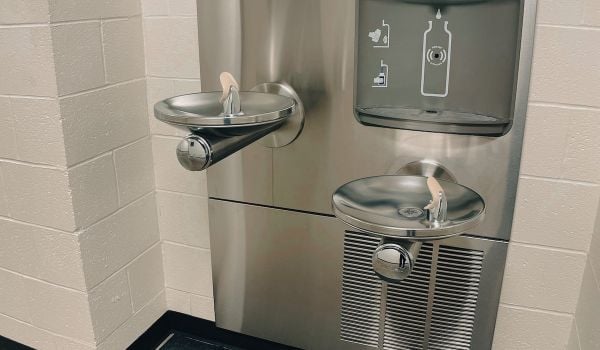Walk by a construction site in Berlin, and you might see an airborne lattice of pastel-colored pipes. Often mistaken for public art or forgotten infrastructure, the pipes carry groundwater away from the foundations of new buildings. The water table in Berlin sits just a few meters below the sidewalk, and over the last 20 years — as Germans have conserved and heavy industry has departed — it has been rising, threatening the capital’s basements with mold and flooding.
Even straightforward questions about groundwater — one of the world’s largest and most poorly managed resources, and one that could be crucial for cities in times of need — have taken a long time to answer. Just last month, researchers, led by Tom Gleeson at the University of Victoria in British Columbia, published an estimate of how much groundwater there is and how long it has been down there.
That paper ventures that the upper 1 1/2 miles of Earth’s crust contains 22.6 million cubic km of groundwater — nearly the equivalent of the Antarctic ice sheet, just beneath your feet. If that water were distributed on the surface of the planet, it would pool 590 feet deep over our current landmasses.
Two billion people rely on aquifers for drinking water. Especially in heavily polluted, developing cities and drought-stricken regions, groundwater is an indispensable resource. “It’s a large buffer, and it can be used to buffer us from climatic variability,” Gleeson says.
But for practical purposes, the world’s underground reservoir is not as large as it seems. The vast majority is old groundwater, which tends to be brackish, saline, low quality and difficult to access. The authors estimate that modern groundwater, which is less than 50 years old and linked to above-ground happenings like rainfall and sprawl, makes up less than 2 percent of the total. Young groundwater, which entered the earth sometime in the last hundred years, makes up at most 6 percent of the supply.
One way they figured that out is pretty cool, and illustrates the connection between real-life events and our invisible underground reservoirs. Because of atomic testing, Gleeson explains, water that’s been on the surface since the 1950s contains trace amounts of tritium, a radioactive but harmless isotope of hydrogen. It serves as a fingerprint of precipitation from that era. More generally, he says, “We can use groundwater as basically an archive of past climatic changes.” The aquifers will also one day bear witness to the uses, contaminants and climate of our own time. In parts of drought-ravaged California, for example, the water table has fallen more than 100 feet below previous historical lows.
Only a fifth of urbanites in large cities depend on groundwater supplies. But thousands of cities, in all kinds of climates, would not be able to function without drawing upon them, including Mexico City, Calcutta, Teheran and Shanghai — all of which have more than 10 million inhabitants.
Groundwater use is fine in principle, but rapidly expanding megacities have not been careful to conserve resources. In Mexico City, for example, where 70 percent of water is withdrawn from the subterranean supply, parts of the city have sunk 30 feet over the past century as the aquifers fall and the earth falls with them.
Groundwater, then, while a crucial resource in hard times, can be easily abused. “It’s a bit dangerous,” Gleeson says. “We often use and manage resources on a really short timescale. If we’re looking on a short timescale, we may not even realize we’re using it up.”
Groundwater-dependent cities, one of Gleeson’s previous papers found, were more likely than cities using surface water to come under water stress.
Berlin, in other words, has an enviable problem.
The Science of Cities column is made possible with the support of the John D. and Catherine T. MacArthur Foundation.

Henry Grabar is a senior editor at Urban Omnibus, the magazine of The Architectural League of New York. His work has also appeared in Cultural Geographies, the Atlantic, The Wall Street Journal and elsewhere. You can read more of his writing here.
Follow Henry .(JavaScript must be enabled to view this email address)











